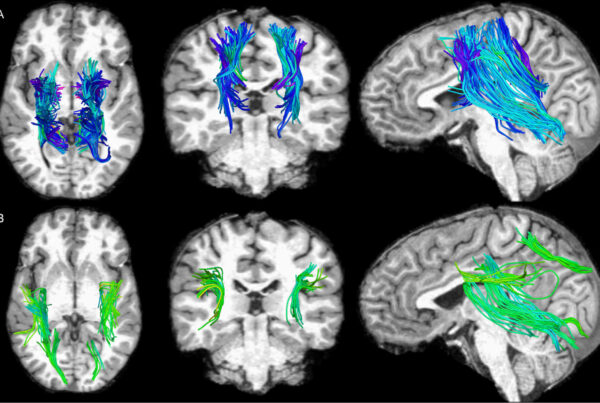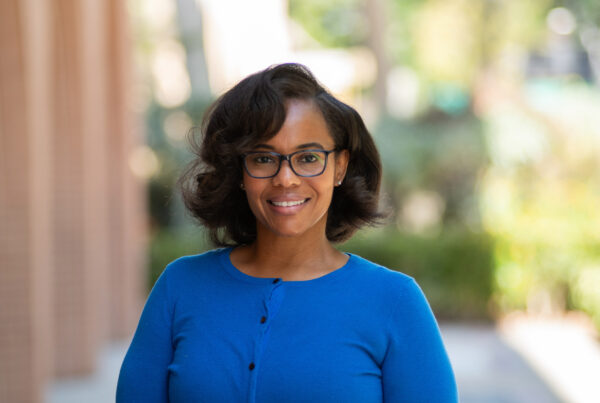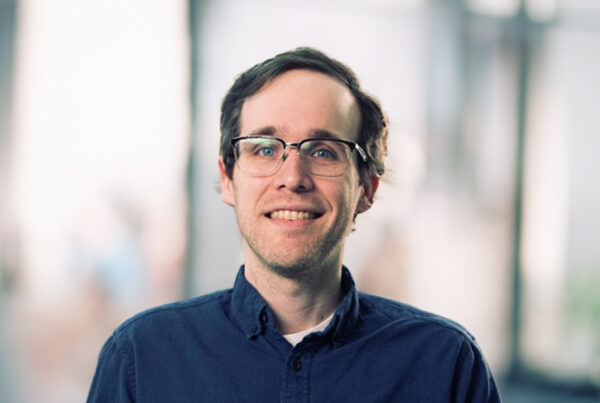Grab bars. No-skid bathtub strips. Brighter lighting. Ramps instead of stairs. These aren’t the items on a typical home improvement checklist. But for older adults, they can literally be lifesaving additions to a house.
Jodi Olshevski MSG ’91 knows this better than most people. As executive director and gerontologist at The Hartford Center for Mature Market Excellence, she’s spent her entire career thinking about how to enhance living for people as they age. About eight years ago, she and her team at The Hartford, a Connecticut-based insurance company, came up with a question: How could they encourage their home insurance customers to make design changes that could improve the comfort and convenience of their homes, enabling them to live there safely and independently even as their needs changed? Olshevski knew where she might launch a hunt for some answers — at her alma mater, USC’s Leonard Davis School, where Professor Jon Pynoos, UPS Foundation Professor of Gerontology, Policy and Planning, was conducting cutting-edge research on how to improve housing for older adults.
Today, that academic-corporate collaboration has resulted in unique benefits for The Hartford’s customers related to universal design: the incorporation of products and building features that allow a space to be used by everyone, no matter their age, size or abilities.

Jodi Olshevski, executive director and gerontologist at The Hartford Center for Mature Market Excellence (Photo © Al Ferreira Photography)
“Many of us associate this kind of design change with old age and frailty, and as a society, we haven’t yet learned to embrace aging,” Olshevski said. “So it’s about changing the way we think.”
One idea Americans do seem to have embraced: aging in place. A 2011 AARP report states that nearly 90 percent of older adults surveyed want to remain in their home for as long as possible, and 80 percent believe their current residence is where they will always live.
The Hartford is especially mindful of these numbers, as it is the exclusive national auto and home insurance provider for members of AARP. So, The Hartford Center for Mature Market Excellence began working on a study with Pynoos and his research team, asking: What would it take to get their customers to think differently about their homes? If they offered information about universal design at the time of an insurance claim for kitchen or bathroom damage, would customers be more likely to incorporate universal design features when having that damage repaired?
Indeed, 89 percent of study participants who completed a postclaim survey did make universal design modifications as they rebuilt their homes. The most common adoptions were glare-free lighting, easy-grasp knobs and handles on cabinets, and flat thresholds between rooms.
That spurred The Hartford’s team of gerontologists into coming up with their own proposals for change. First, they helped to create and patent an optional homeowner’s policy rider called The Hartford Replacement Plus Coverage. It reimburses homeowners for universal design upgrades to a kitchen or bathroom after a covered insurance loss in the kitchen or bathroom. Customers can purchase coverage amounts ranging from $1,000 to $5,000.
The idea for a home insurance rider also reflects the ethos of the moment. Medicare Advantage Plans, which are administered by private insurers who are paid by Medicare, will soon begin offering coverage for some modifications.
The Hartford and USC research pointed out, though, that it wasn’t enough for homeowners to desire universal design improvements. Customers would also benefit from having access to a pool of contractors versed in doing such work.
“We found that a lot of our customers would love to have someone who knows something about universal design actually involved in the repairs they’re making after a claim,” Olshevski said. “That contractor is so critical in saying, ‘Here’s a really great idea: While you’re redoing that bathroom, why don’t you consider a comfort-level toilet, or a grab bar, or a walk-in shower?’”
So The Hartford partnered with USC, this time to design a customized home modification certification program for contracting professionals. The six-week-long training program can be done completely online. Contractors sign up for it through USC, and it’s administered by USC. It builds on an online executive certificate in home modification program that the university has administered since 2004. That one is designed for a wide range of students, from senior center staff members to contractors and occupational therapists, whereas the program created for The Hartford is solely for the network of housing contractors that The Hartford makes available to its customers after a claim. USC has been running the training program for the contractors in The Hartford’s contracted network twice a year since its inception in 2014. So far, about 120 contractors have received certification. “We’re ramping that up, because it’s so critical that contractors going into the homes of older adults are trained,” said Julie Overton, a learning and development specialist at the USC Leonard Davis School.
Finally, because The Hartford has a number of customers who fortunately never experience a claim, The Hartford used the information generated by USC researchers to create an online campaign to highlight the benefits of universal design and encourage those who may be remodeling their homes to incorporate such features. The site — www.thehartford.com/remodel — cites a study by The Hartford-USC showing that while 40 percent of boomers planned to remodel their home sometime in the future, most cited the need to refresh “dated” rooms. Only 21 percent of the would-be remodelers had taken their own health and aging into consideration when making their plans.
But when shown photos of universal design features, many respondents warmed to the idea. In the kitchen, 75 percent of respondents said they would consider pull-out drawers in base cabinets and 59 percent were open to the idea of D- or U-shaped handles rather than knobs. For the bathroom, 56 percent said they would consider single-lever faucet handles, and 53 percent would consider adding grab bars in the shower and tub, according to the study.
Throughout all of this work, Pynoos and his team at USC have been essential partners, Olshevski said. “They’ve been with us every step of the way, helping to inform and shape ideas,” she said. “It’s a long-term effort. This kind of innovation doesn’t happen overnight. It takes a steady partner to stick with us and apply their expertise.”
Pynoos added that university/private sector partnerships such as The Hartford-USC collaboration are key to making changes in housing that will help older persons achieve their goal of aging in place. “Together, we have been able to take research and turn it into reality,” he said.





